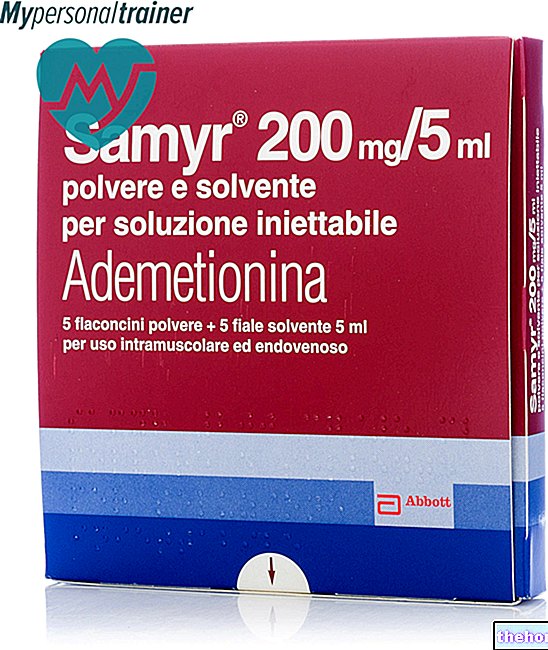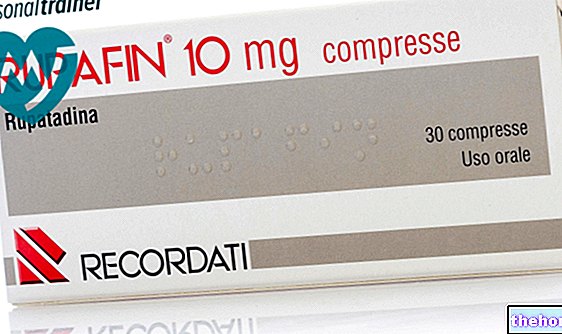Active ingredients: Eflornithine
Vaniqa 11.5% cream (eflornithine)
Indications Why is Vaniqa used? What is it for?
Vaniqa contains the active substance eflornithine. Eflornithine slows hair growth through its effect on a specific enzyme (a protein in the body involved in hair production).
Vaniqa is used to reduce unwanted hair growth (hirsutism) on the face of women over 18 years of age.
Contraindications When Vaniqa should not be used
Do not use Vaniqa:
- if you are allergic (hypersensitive) to eflornithine or to any of the other ingredients listed in section 6.
Precautions for use What you need to know before taking Vaniqa
Be careful with Vaniqa especially
- Before using Vaniqa, tell your doctor about any other problems you have (especially if related to your kidneys or liver).
- if you are unsure whether or not to use this medicine contact your doctor or pharmacist for advice.
Excessive hair growth can be the manifestation of an underlying disease. Talk to your doctor if you have polycystic ovary syndrome (SOP), if you have tumors that produce a specific hormone or if you are taking medicines that can induce hair growth, such as cyclosporine (following an organ transplant). ), glucocorticoids (for example as a treatment for rheumatic or allergic diseases), minoxidil (for high blood pressure), phenobarbital (for seizures), phenytoin (for seizures) or hormone replacement therapy with effects similar to those of male hormones.
Children
Vaniqa is not recommended for use in persons under the age of 18.
Interactions Which drugs or foods may change the effect of Vaniqa
Tell your doctor or pharmacist if you are taking or have recently taken any other medicines, including medicines obtained without a prescription.
Talk to your doctor if you need to use other medicines on the part of your skin where you are using the cream.
Warnings It is important to know that:
Pregnancy and breastfeeding
Do not use this medicine if you are pregnant or breastfeeding. If you are pregnant or trying to get pregnant you should use an alternative method of treating facial hair.
Driving and using machines
No effect of Vaniqa on the ability to drive and use machines is expected.
Important information about some of the ingredients of Vaniqa
The medicine contains cetostearyl alcohol and stearyl alcohol, which can cause local skin reactions (e.g. contact dermatitis). It also contains methyl parahydroxybenzoate (E218) and propyl parahydroxybenzoate (E216) which can cause allergic reactions (possibly delayed type).
Dose, Method and Time of Administration How to use Vaniqa: Posology
Always use Vaniqa as your doctor has told you. If you are unsure, ask your doctor or pharmacist for clarification.
- You use it twice a day, at least 8 hours apart.
- If you develop irritation (eg a burning or stinging sensation), reduce the use of Vaniqa to once a day until the irritation subsides. If irritation persists contact your doctor.
- If you have just shaved or used any other hair removal means, wait at least 5 minutes before using Vaniqa. Applying the cream to injured or irritated skin can cause a stinging or burning sensation.
- Clean and dry the skin on which you will use the cream.
- Apply a thin layer of cream and massage vigorously until any visible residue of the product on the treated areas disappears.
- If possible, do not wash these parts of the skin for 4 hours after applying the cream.
- Wash your hands after applying the cream.
- Wait at least 5 minutes before using face makeup or sunscreen on the same area.
- If you use it on the face, avoid contact with the eyes or with the cavities of the nose and mouth. Should Vaniqa inadvertently come into contact with your eyes, nose or mouth, rinse thoroughly with water.
Vaniqa is not a depilatory cream, so you may need to continue using your usual method of hair removal, such as shaving or plucking.
Results may take 8 weeks to wait, during which it is important to continue using the cream. If you do not see any improvement after using it for 4 months, contact your doctor. If you stop applying the cream, hair growth may return to normal. initial levels over 8 weeks.
Overdose What to do if you have taken too much Vaniqa
If you use more Vaniqa than you should
If you put too much cream on your skin, it is unlikely that it will harm you.
If you or someone else accidentally swallow Vaniqa, contact your doctor immediately.
If you forget to use Vaniqa
Apply the product immediately, but wait at least 8 hours before repeating the application.
If you stop taking Vaniqa
To maintain the reduction in hair growth continue to use Vaniqa without interruption as directed.
If you have any further questions on the use of this medicine, ask your doctor or pharmacist.
Side Effects What are the side effects of Vaniqa
Like all medicines, Vaniqa can cause side effects, although not everybody gets them.
Usually the side effects are limited to the skin and of mild intensity. In these cases they usually resolve without discontinuing Vaniqa.
The frequency of possible side effects listed below is defined using the following convention:
Very common (affects more than 1 in 10 patients)
Common (affects 1 to 10 users in 100)
Uncommon (affects 1 to 10 users in 1,000)
Rare (affects between 1 and 10 out of 10,000 patients)
Very rare (affects less than 1 user in 10,000)
Not known (frequency cannot be estimated from the available data).
Very common (affects more than 1 in 10 patients)
- acne
Common (affects 1 to 10 users in 100)
- dryness of the skin
- hair loss
- inflammation of the hair shaft
- itch
- eruption
- redness
- skin irritation and bumps caused by shaving
- skin irritation or a prickling, tingling or burning sensation on the skin
Uncommon (affects 1 to 10 users in 1,000)
- bumpy rash (papular rash)
- cold sores
- redness and irritation at the site of application of the cream
- eczema
- inflamed, dry, chapped, or numb lips
- ingrown hairs
- pale skin rash
- bleeding skin
- boils
- skin flushing
- inflammation of the skin
- sore skin
- swelling of the mouth or face
- abnormal hair structure or growth
Rare (affects between 1 and 10 out of 10,000 patients)
- abnormal skin growth (skin cancer)
- excessive hair growth
- flushing, redness of the face and boils, possibly with pus
- other skin disorders
- inflammation of the skin with redness, peeling and itching (seborrheic dermatitis)
- rash with redness, bumps or blisters
- skin cyst
- hardening of the skin
Reporting of side effects
If you get any side effects, talk to your doctor, pharmacist or nurse. This includes any possible side effects not listed in this leaflet. You can also report side effects directly via the national reporting system listed in Appendix V. side effects you can help provide more information on the safety of this medicine
Expiry and Retention
Keep out of the reach and sight of children.
Do not use Vaniqa after the expiry date which is stated on the carton and at the base of the tube after EXP. The expiry date refers to the last day of the month.
Make sure the tube cap is tightly closed after each use.
Do not store above 25 ° C.
Medicines should not be disposed of via wastewater or household waste. Ask your pharmacist how to throw away medicines you no longer use. This will help protect the environment.
Composition and pharmaceutical form
What Vaniqa contains
The active ingredient in Vaniqa is eflornithine. Each gram of cream contains 115 mg of eflornithine (hydrochloride monohydrate).
The excipients are:
cetostearyl alcohol, macrogol cetostearyl ether, dimethicone, glyceryl stearate, macrogol stearate, methyl para-hydroxybenzoate (E218), liquid paraffin, phenoxyethanol, propyl para-hydroxybenzoate (E216), purified water and stearyl alcohol. In some cases small amounts of sodium hydroxide (E524) are added to maintain normal acidity levels (pH levels).
Description of what Vaniqa looks like and contents of the pack
Vaniqa is a white to off-white cream. It is dispensed in tubes of 15 g, 30 g and 60 g but not all pack sizes may be marketed.
Source Package Leaflet: AIFA (Italian Medicines Agency). Content published in January 2016. The information present may not be up-to-date.
To have access to the most up-to-date version, it is advisable to access the AIFA (Italian Medicines Agency) website. Disclaimer and useful information.
01.0 NAME OF THE MEDICINAL PRODUCT
VANIQA 11.5% CREAM
02.0 QUALITATIVE AND QUANTITATIVE COMPOSITION
Each gram of cream contains 115 mg of eflornithine (hydrochloride monohydrate).
Excipients:
Each gram of cream contains 47.2 mg of cetostearyl alcohol, 14.2 mg of stearyl alcohol, 0.8 mg of methyl parahydroxybenzoate and 0.32 mg of propyl parahydroxybenzoate.
For the full list of excipients, see section 6.1.
03.0 PHARMACEUTICAL FORM
Cream.
White to off-white cream.
04.0 CLINICAL INFORMATION
04.1 Therapeutic indications
Treatment of facial hirsutism in women.
04.2 Posology and method of administration
Dosage
Vaniqa cream should be applied to the affected area twice a day, at least eight hours apart.
The efficacy has only been demonstrated for the affected areas of the face and under the chin. Application should be limited to these areas. The maximum applied doses used safely in clinical trials were up to 30 grams per month.
An improvement in the condition can be seen within 8 weeks of starting treatment.
Continuous treatment can allow for further improvement and is necessary to maintain the beneficial effects.
The situation may return to pre-treatment levels within eight weeks of stopping treatment.
If no beneficial effects are seen within 4 months of initiation of therapy, use should be discontinued.
Patients may need to continue with the use of epilation means (eg mechanical shaving or epilation) in combination with Vaniqa. In this case, the cream should be applied no earlier than five minutes after shaving or using other methods. hair removal, as an increase in the burning or stinging sensation may occur.
Special populations
Elderly (> 65 years): no dosage adjustment is required.
Pediatric population: The safety and efficacy of Vaniqa in girls aged 0-18 years have not been established. There are no data available to support its use in this age group.
Hepatic / renal insufficiency: The safety and efficacy of Vaniqa in women with hepatic or renal insufficiency have not been established. Since the safety of Vaniqa has not been studied in patients with severe renal insufficiency, Vaniqa should be prescribed with caution to such patients. no data is available.
Method of administration
A thin layer of cream should be applied to the clean and dry affected areas. The cream should be massaged thoroughly. The medicine must be applied in such a way that, after the massage, no residues of the product are noticed in the treated areas. Wash your hands after applying the medicine. For maximum effectiveness, the area should not be cleansed within four hours of application. Cosmetics (including sunscreen) can be applied to the treated area, but no earlier than five hours. minutes after application.
04.3 Contraindications
Hypersensitivity to eflornithine or to any of the excipients (see section 6.1).
04.4 Special warnings and appropriate precautions for use
Excessive hair growth may be due to serious non-manifest diseases (eg polycystic ovary syndrome, secretory androgenic neoplasm) or some active ingredients (eg cyclosporine, glucocorticoids, minoxidil, phenobarbitone, phenytoin, combined hormone replacement therapy estrogen androgen).
These factors will need to be considered as part of the medical treatment of patients who may be prescribed Vaniqa.
Vaniqa is for cutaneous use only. Avoid contact with eyes or mucous membranes (e.g. nose or mouth). Transient stinging or stinging sensations may occur when the cream is applied to abraded or wounded skin.
In the event of skin irritation or intolerance development, the frequency of applications should be temporarily reduced to once a day. If irritation persists, treatment should be discontinued and a physician consulted.
The medicine contains cetostearyl alcohol and stearyl alcohol, which can cause local skin reactions (e.g. contact dermatitis), and methyl parahydroxybenzoate and propyl parahydroxybenzoate which can cause allergic reactions (possibly delayed type).
04.5 Interactions with other medicinal products and other forms of interaction
No interaction studies have been performed.
04.6 Pregnancy and breastfeeding
Pregnancy:
Data from all clinical studies on a limited number of exposed pregnancies indicate that there is no clinical evidence that treatment with Vaniqa adversely affects mothers or fetuses. Of the 22 pregnancies that occurred during the studies, only 19 occurred while the patient was using Vaniqa. Among these 19 pregnancies, there were 9 healthy infants, 5 elective abortions, 4 miscarriages and one neonatal defect (Down syndrome in a 35-year-old woman). To date, no other relevant epidemiological data are available. Animal studies have shown reproductive toxicity (see section 5.3). The potential risk for humans is unknown. Therefore, women who are pregnant or planning to become pregnant should use a different system to treat facial hirsutism.
Feeding time:
It is not known whether eflornithine is excreted in breast milk. Women should not use Vaniqa while breastfeeding.
Fertility:
No data are available.
04.7 Effects on ability to drive and use machines
Vaniqa has no or negligible influence on the ability to drive or use machines.
04.8 Undesirable effects
The most reported cutaneous adverse reactions were essentially mild in intensity and resolved without discontinuation of Vaniqa or initiation of medical treatment. The most frequently reported adverse reaction was acne, which was generally mild. In vehicle-controlled studies (n = 596), acne was detected at baseline in 41% of patients; 7% of patients treated with Vaniqa and 8% of those treated with vehicle alone experienced worsening. of the condition. Of those without acne at baseline, a similar percentage (14%) reported acne following treatment with Vaniqa or vehicle alone.
The following list shows the frequency of cutaneous adverse reactions observed in clinical studies, according to the MedDRA convention. MedDRA conventions for frequency are: very common (≥1 / 10), common (≥1 / 100, erythema was reported more frequently among patients treated with Vaniqa than with vehicle alone, as indicated by the asterisk (*).
Frequency of cutaneous adverse reactions observed in clinical studies with Vaniqa (according to the MedDRA frequency convention).
Disorders of the skin and subcutaneous
Very common (≥1 / 10):
Acne
Common (≥1 / 100,:
Beard pseudofolliculitis, alopecia, prickling sensation *, skin burning *, dry skin, itching, erythema *, tingling *, skin irritation, rash *, folliculitis
Uncommon (≥1 / 1,000,:
Ingrown hair, face edema, dermatitis, mouth edema, papular rash, skin bleeding, herpes simplex, eczema, cheilitis, furunculosis, contact dermatitis, hair texture and abnormal growth, hypopigmentation, skin redness with sensation of heat, numbness of the lips, skin tenderness
Rare (≥1 / 10,000,:
Rosacea, seborrheic dermatitis, skin neoplasms, maculopapular rashes, skin cysts, vesiculobullous rashes, skin disorders, hirsutism, skin tightness
Pediatric population
Adverse reactions observed in adolescents are similar to those seen in adult women.
04.9 Overdose
Given the minimal dermal penetration of eflornithine (see section 5.2), an overdose is highly unlikely. However, in case of dermal administration of a high dose or in case of accidental ingestion, attention should be paid to the effects observed with therapeutic doses of eflornithine. administered intravenously (400 mg / kg / day or approximately 24 g / day) in the treatment of Trypanosoma brucei gambiensis (African lethargic encephalitis): hair loss, facial swelling, seizures, hearing disturbances, gastrointestinal disturbances, loss of appetite, headache, weakness, dizziness, anemia, thrombocytopenia, leukopenia.
Should symptoms of overdose occur, use of the medicinal product should be discontinued.
05.0 PHARMACOLOGICAL PROPERTIES
05.1 Pharmacodynamic properties
Pharmacotherapeutic group: other dermatological preparations. ATC code: D11A X16.
Eflornithine irreversibly inhibits ornithine decarboxylase, an enzyme involved in the production of the hair shaft by the follicle. Vaniqa has been shown to reduce the hair growth rate.
The safety and efficacy of Vaniqa compared to vehicle alone were evaluated in two randomized double-blind clinical trials in 596 women with type I-VI skin (395 on Vaniqa, 201 on vehicle alone) treated for up to 24 The doctors assessed the change from baseline on a 4-point scale 48 hours after the women had shaved the treated areas of the affected parts of the face and under the chin, considering parameters such as hair length and hair length. density, and the darkening of the skin associated with the presence of terminal hair. An improvement was observed 8 weeks after the start of treatment.
The combined results of these two studies are presented below:
* At the end of therapy (24th week). For patients who discontinued therapy during the study, the last observation was made at week 24. A statistically significant (p ≤0.001) improvement for Vaniqa compared to vehicle alone was observed in each of these studies for women with responses such as marked improvement or clear / almost clear. These improvements led to a corresponding reduction in the apparent darkening of the facial skin associated with the presence of terminal hair. Subgroup analyzes showed a difference in treatment success, with 27% of non-white women and 39% of white women showing marked or greater improvement. Subgroup analyzes also showed that 29% of obese women (BMI ≥30) and 43% of normal weight women (postmenopausal BMI. Significant improvement (p menopause.
Patient self-assessment demonstrated a significant reduction in psychological distress associated with the condition, measured through responses to 6 questions on a visual analog scale. Vaniqa significantly reduced patients' discomfort with facial hair and the time it took to remove, treat or hide them. The patient's well-being in some social or work situations was also better. The patient's self-assessments correlated with the physician's observations on efficacy. These patient-observable differences were visible after 8 weeks of treatment.
The situation returned to pre-treatment levels within eight weeks of discontinuing therapy.
05.2 "Pharmacokinetic properties
Steady state dermal penetration of eflornithine, administered as Vaniqa to shaved facial skin in women, was 0.8%.
The half-life of eflornithine at steady state is approximately 8 hours. Steady state is reached within four days. Peak and trough plasma concentrations of eflornithine were approximately 10 ng / mL and 5 ng / mL, respectively. At steady state, the area under the plasma concentration-time curve at 12 hours was 92.5 ng / hr / mL.
Eflornithine is not known to be metabolised. Eflornithine is eliminated primarily in the urine.
05.3 Preclinical safety data
Based on conventional studies of repeated dose toxicity, genotoxicity and potential carcinogenicity, including a photocarcinogenicity study in mice, preclinical data reveal no special hazard for humans.
In a dermal fertility study in rats, there were no adverse effects on fertility up to 180 times the doses used in humans.
In dermal teratology studies, no teratogenic effects were observed in rats and rabbits at doses up to 180 times and 36 times those used in humans, respectively. Higher doses produced maternal and fetal toxicity without evidence of teratogenicity.
06.0 PHARMACEUTICAL INFORMATION
06.1 Excipients
Cetostearyl alcohol; macrogol cetostearyl ether; dimethicone; glyceryl stearate; macrogol stearate; methyl para-hydroxybenzoate (E218); liquid paraffin; phenoxyethanol; propyl para-hydroxybenzoate (E216); purified water; stearyl alcohol; sodium hydroxide (E524) (to adjust the pH).
06.2 Incompatibility
Not relevant.
06.3 Period of validity
3 years.
06.4 Special precautions for storage
Store at temperatures not exceeding 25 ° C.
06.5 Nature of the immediate packaging and contents of the package
High density polyethylene tube, with polypropylene screw cap, containing 15 g, 30 g or 60 g of cream. Not all pack sizes may be marketed.
06.6 Instructions for use and handling
Unused medicine and waste derived from this medicine must be disposed of in accordance with local regulations.
07.0 MARKETING AUTHORIZATION HOLDER
Almirall SA - Ronda General Miter 151, 08022 Barcelona - Spain
08.0 MARKETING AUTHORIZATION NUMBER
EU / 1/01/173/001 - AIC: 035115017
EU / 1/01/173/002 - AIC: 035115029
EU / 1/01/173/003 - AIC: 035115031
09.0 DATE OF FIRST AUTHORIZATION OR RENEWAL OF THE AUTHORIZATION
Date of first authorization: 20 March 2001
Date of last renewal: 07 March 2011




























